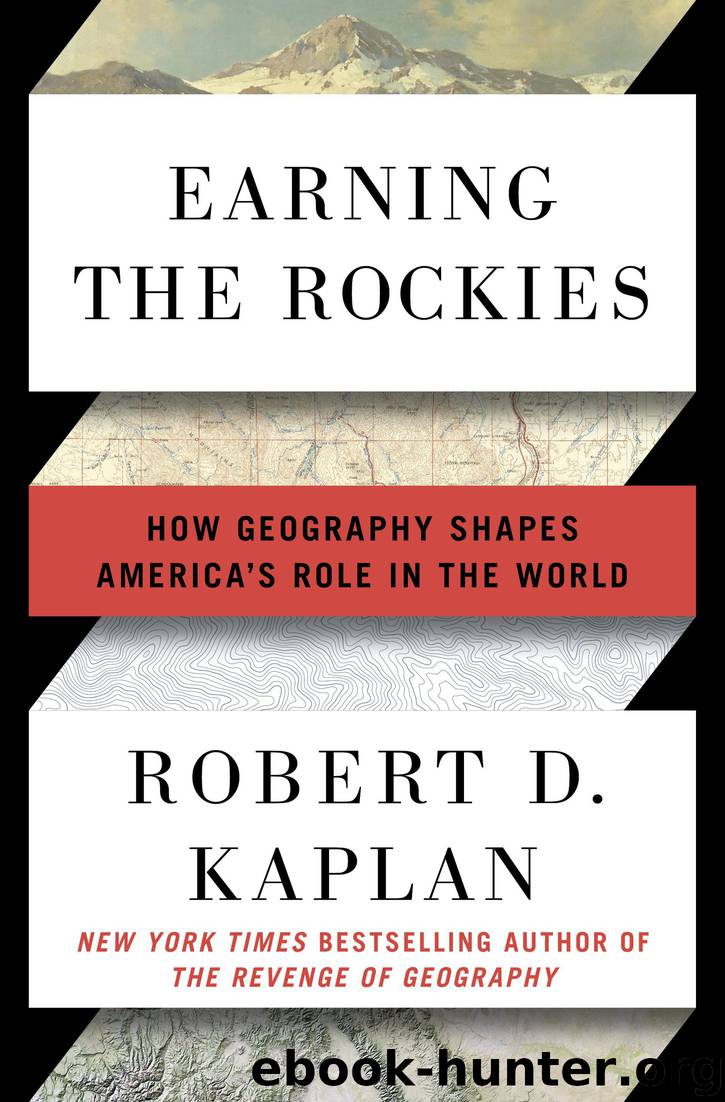Earning the Rockies by Robert D. Kaplan

Author:Robert D. Kaplan
Language: eng
Format: epub
Publisher: Random House Publishing Group
Published: 2017-01-24T05:00:00+00:00
V
CATHAY
There are few singular expressions of military and national power in the early twenty-first century as vivid as that of Naval Base San Diego, the principal port in the Lower 48 of the U.S. Pacific Fleet. Witness the miles of more than fifty gray-hulled steel behemoths of war, each surface ship and submarine costing billions of dollars, lined up, as if in formation, in their gargantuan piers: frigates, destroyers, cruisers, amphibs, and the odd aircraft carrier—a single carrier costing upward of $18 billion, with its dozens of fighter jets and other squadrons on deck. Each of the navy’s eleven Nimitz- and Ford-class nuclear-powered supercarriers, with a flight deck several football fields in length, is an icon of imperial-like maintenance: able to launch air attacks on shore from hundreds of miles away; able, simply by virtue of its location at sea, to apply diplomatic pressure while keeping the guns silent. Indeed, a lone U.S. aircraft carrier strike group, with its train of cruisers, destroyers, submarine, and other ships, constitutes (excepting nuclear bombs) the foremost weapon of violent destruction of the modern and postmodern ages. The United States has more than double the number of aircraft carriers of any other country, and many of its closest competitors have carriers that the U.S. Navy would not even label carriers at all—to us, they would be smaller amphibious assault ships.
This is the industrial-age navy that Theodore Roosevelt began to build more than a century ago with his Great White Fleet—the navy battle fleet that circumnavigated the globe from 1907 to 1909 in order to advance his imperial vision. Because the actual use of nuclear weapons is (to say the least) extremely problematic, it is this navy, since the end of World War II, that has constituted America’s most important strategic instrument.
After more than a month of driving, I see the coastline in full force, underlining the distance that I traveled. Leaving my car to look closer at these ships, I recall that in the estimation of the Yale- and Cambridge-educated historian and archaeologist John R. Hale, it was the Athenian navy that was the “emblem of liberty and democracy,” as well as of “imperial ambition,” governing 150 islands and coastal city-states. “Without the Athenian navy,” Hale writes, “there would have been no Parthenon, no tragedies of Sophocles or Euripides, no Republic of Plato or Politics of Aristotle.” The warships of ancient Athens were “also a force that fostered new democracies throughout the Greek world.”1 It is not an exaggeration to say that the U.S. Navy has served a similar function—if not quite to the same degree—throughout this country’s history and especially since the 1940s.
It is this navy, organized basically into aircraft carrier strike groups, working in unison with America’s numbered air forces, that sustains a liberal maritime order, in which sea lines of communication and access to hydrocarbons are secure for America’s allies, with piracy confined to the edges of the battlespace as an exotic nuisance only. Such is the primary geopolitical good that America provides the world.
Download
This site does not store any files on its server. We only index and link to content provided by other sites. Please contact the content providers to delete copyright contents if any and email us, we'll remove relevant links or contents immediately.
| Anthropology | Archaeology |
| Philosophy | Politics & Government |
| Social Sciences | Sociology |
| Women's Studies |
Born to Run: by Christopher McDougall(6895)
The Leavers by Lisa Ko(6806)
iGen by Jean M. Twenge(5163)
Sapiens by Yuval Noah Harari(5124)
The Kite Runner by Khaled Hosseini(4952)
Spare by Prince Harry The Duke of Sussex(4789)
Bullshit Jobs by David Graeber(3836)
Machine Learning at Scale with H2O by Gregory Keys | David Whiting(3633)
Livewired by David Eagleman(3535)
Never by Ken Follett(3528)
Goodbye Paradise(3446)
Fairy Tale by Stephen King(2950)
A Dictionary of Sociology by Unknown(2857)
Harry Potter 4 - Harry Potter and The Goblet of Fire by J.K.Rowling(2801)
The Social Psychology of Inequality by Unknown(2766)
The Club by A.L. Brooks(2747)
People of the Earth: An Introduction to World Prehistory by Dr. Brian Fagan & Nadia Durrani(2619)
0041152001443424520 .pdf by Unknown(2597)
Will by Will Smith(2580)
